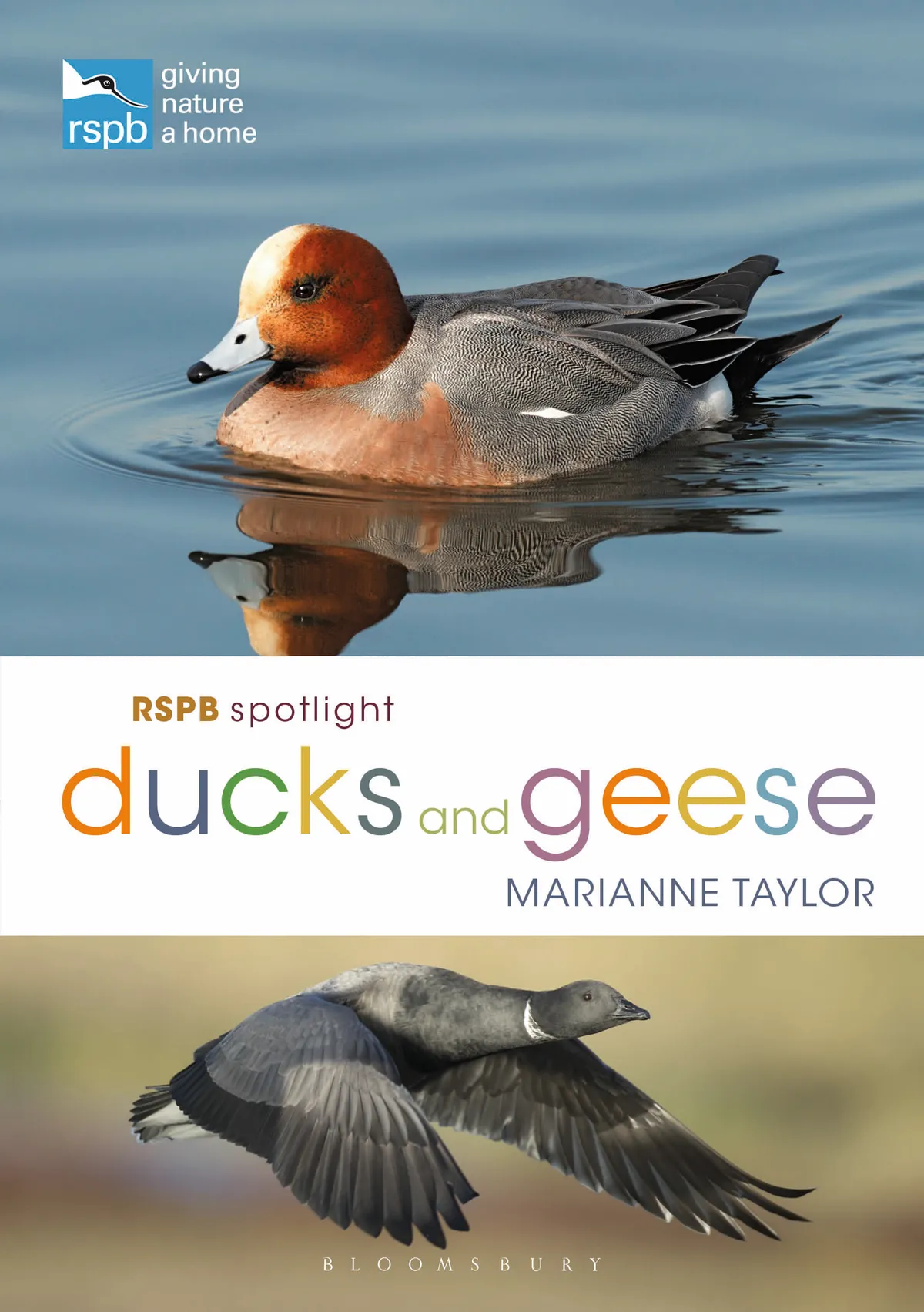Winter birdwatching in the UK holds many joys, one of which is welcoming thousands of wildfowl from their breeding grounds further north and east. Of the 22 species of ducks that regularly occur in the UK, three occur only in winter, and another 15 are far more numerous in winter than summer.
Winter is also a great time to see these birds at their very best, with the drakes in fresh and beautiful plumage. By late winter, these males will be energetically courting the females to form pair bonds that will keep them together as they travel back to their breeding grounds in spring. Head to your nearest lake, marshland, estuary or bay to get acquainted with a colourful world of wildfowl.
By late spring, all of our winter ducks have moved back to their breeding areas. However, several species are with us in good numbers all year round, and there is one (the garganey) which is a summer visitor to the UK. Spring is the time to see courtship and nesting behaviour, with the first broods of ducklings appearing by early summer.
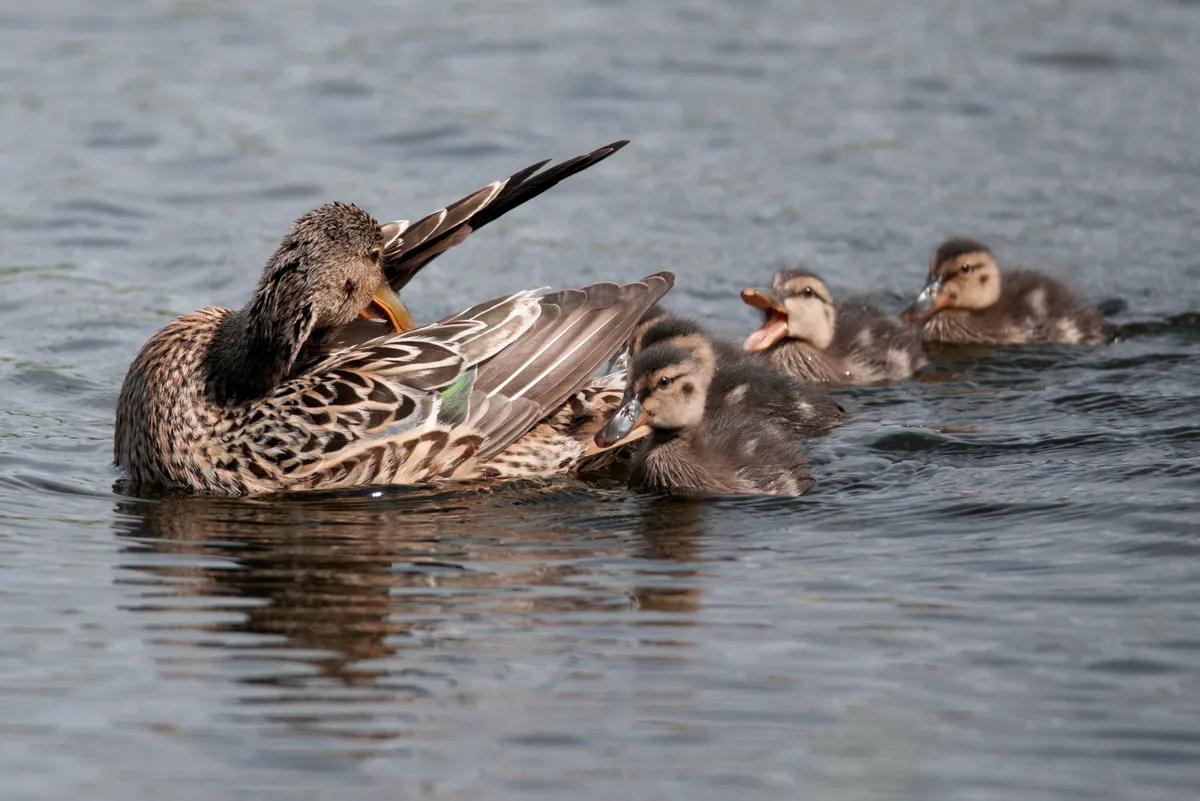
Which species of duck are found in the UK?
The UK’s 22 regularly occurring duck species are shown below, along with their breeding and wintering populations, and their status as UK birds (the majority are native but a few are non-native, introduced accidentally or deliberately here by people).
The first two in the list, the Egyptian goose and shelduck, fall somewhere in between the geese and the ducks in terms of their relationships. The Egyptian goose looks more goose-like and the shelduck more duck-like, but because they are such close cousins we are including them both here.
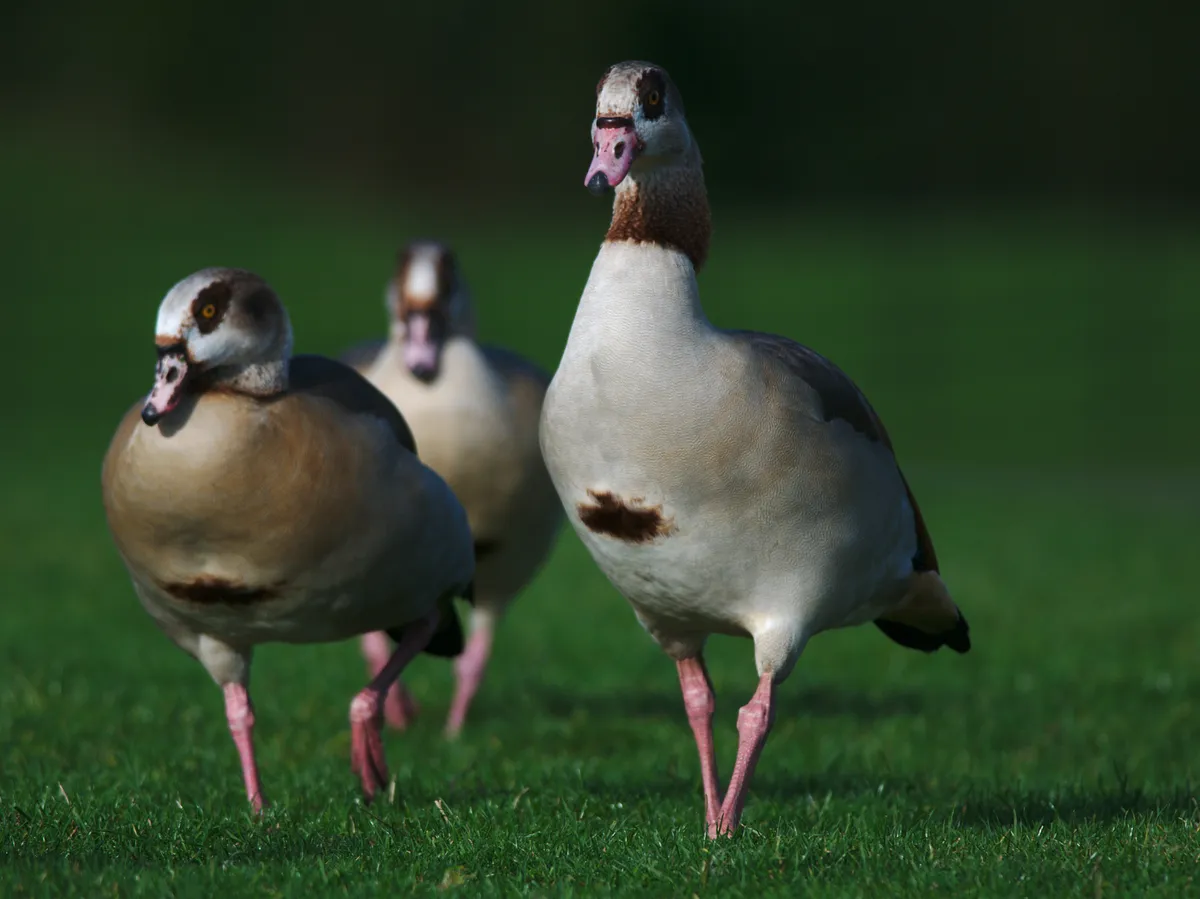
Species (scientific name) – breeding population/wintering population – native or introduced:
- Egyptian goose (Alopochen aegytpiaca) – 1,100 pairs/3,400 birds – introduced
- Shelduck (Tadorna tadorna) – 15,000 pairs/61,000 birds – native
- Mallard (Anas platyrhynchos) – 61,000-146,000 pairs/710,000 birds – native (though numbers increased by releases and escapes of farmyard and pet ducks)
- Wigeon (Mareca penelope) – 400 pairs/440,000 birds – native
- Shoveler (Spatula clypeata) – 700 pairs/18,000 birds – native
- Pintail (Anas acuta) – 9-33 pairs/29,000 birds – native
- Gadwall (Mareca strepera) – 1,200 pairs/25,000 birds – native (though numbers increased by releases of captive birds)
- Teal (Anas crecca) – 2,100 pairs/210,000 birds – native
- Garganey (Spatula querquedula) – 12-93 pairs/none – native
- Tufted duck (Aythya fuligula) – 16,000-19,000 pairs/110,000 birds – native
- Pochard (Aythya ferina) – 681 pairs/38,000 pairs – native
- Red-crested pochard (Netta rufina) – 10-21 pairs/500 words – introduced (also occurs naturally as a wanderer from mainland Europe)
- Scaup (Aythya collaris) – 1-2 pairs/5,200 birds – native
- Mandarin (Aix galericulata) – 2,300 pairs/7,000 birds – introduced
- Goosander (Mergus merganser) – 3,100-3,800 pairs/12,000 birds – native
- Red-breasted merganser (Mergus serrator) – 2,800 pairs/9,000 birds – native
- Smew (Meregllus albellus) – none/180 birds –native
- Long-tailed duck (Clangula hyemalis) – none/11,000 birds – native
- Eider (Somateria mollissima) – 26,000 pairs/60,000 birds – native
- Common scoter (Melanitta nigra) – 52 pairs / 100,000 birds – native
- Velvet scoter (Melanitta fusca) – none/2,500 birds – native
- Goldeneye (Bucephala clangula) – 200 pairs/27,000 birds - native
What types of duck are there?
We often divide up the ducks into two categories by the way that they find their food. Dabbling ducks stay on the surface, and dip their bills into the water – they may also dip in their whole heads or ‘up-end’ to reach deeper, but they don’t actually fully submerge. Diving ducks dive right under the surface and actively swim underwater, taking food from the bottom or chasing prey through the water.

Dabblers and divers may both also feed on dry land, but you will see the dabblers doing this much more often. Even when they are not feeding, you can often tell a dabbler from a diver on the water by looking at its back end. A dabbler sits high on the water, with its tail pointing up at an angle, while a diver has a lower profile, with the tail close to or sometimes even under the surface.
Most of our ducks have a fairly varied diet but they have their favourite foods, and some are true specialists. The eider and the scoters, for example, mainly feed on crabs and mussels from the sea bed. They can dive down more than 20 metres and stay under for more than a minute. The sawbills (goosander, smew and red-breasted merganser) chase fish underwater, while the wigeon spends most of its time grazing on grassy lake shores.
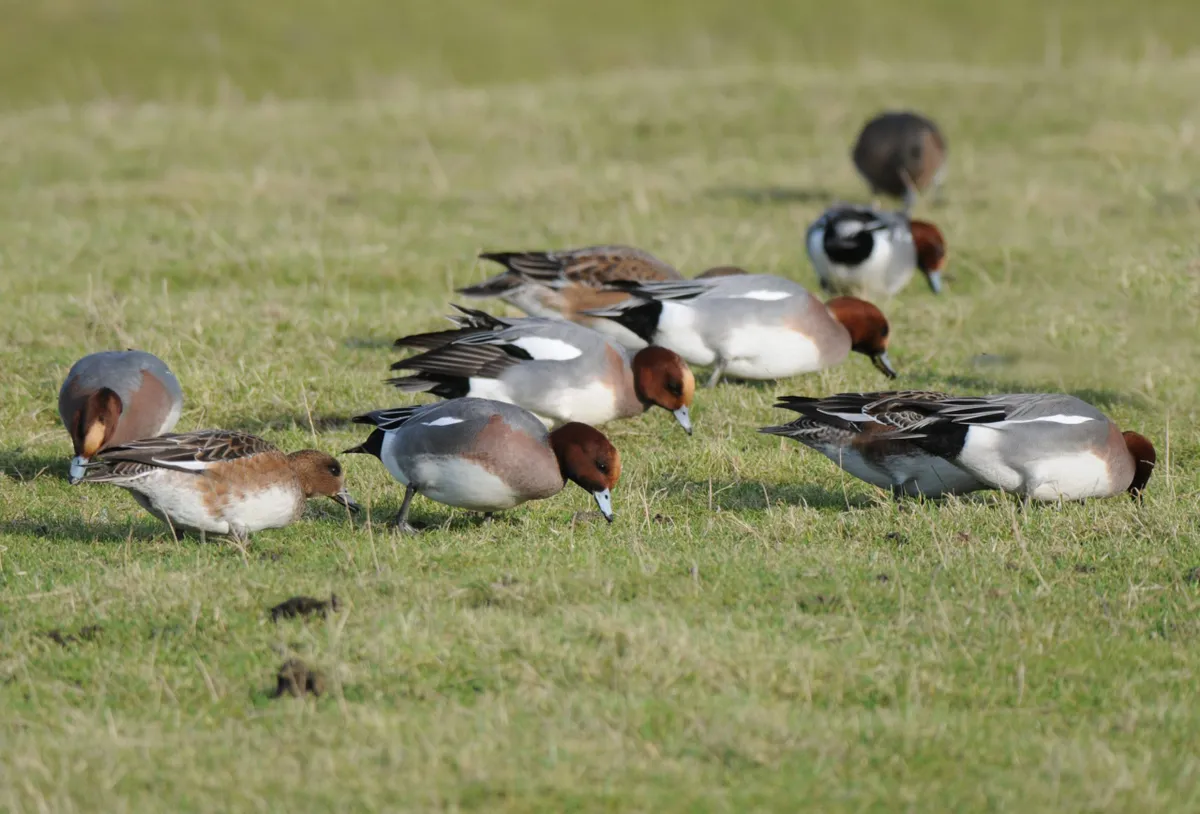
Because their food tends to be abundant in particular places, ducks look for other ducks when they are on the wing and in search of a place to forage. At the best, richest feeding areas they will gather in huge, mixed-species flocks. However, even small parkland lakes will often attract a few extra migrant ducks in winter.
What other species of ducks can be found in the UK?
Sometimes – in fact quite often – you will find a duck that isn’t in the books. Here in the UK there are many zoos and parks that keep collections of exotic wildfowl from all over the world. These birds are kept from straying by having the flight feathers cut short on one wing, but the feathers do regrow each year and without careful attention, some birds manage to escape. The UK populations of Egyptian goose, mandarin and red-crested pochard all derive from escaped birds.
You might also encounter escaped (or, sadly, dumped) domestic ducks, of the kinds usually kept for eggs or meat, or just as pets. Most of these descend from the mallard but may look very different to wild mallards.
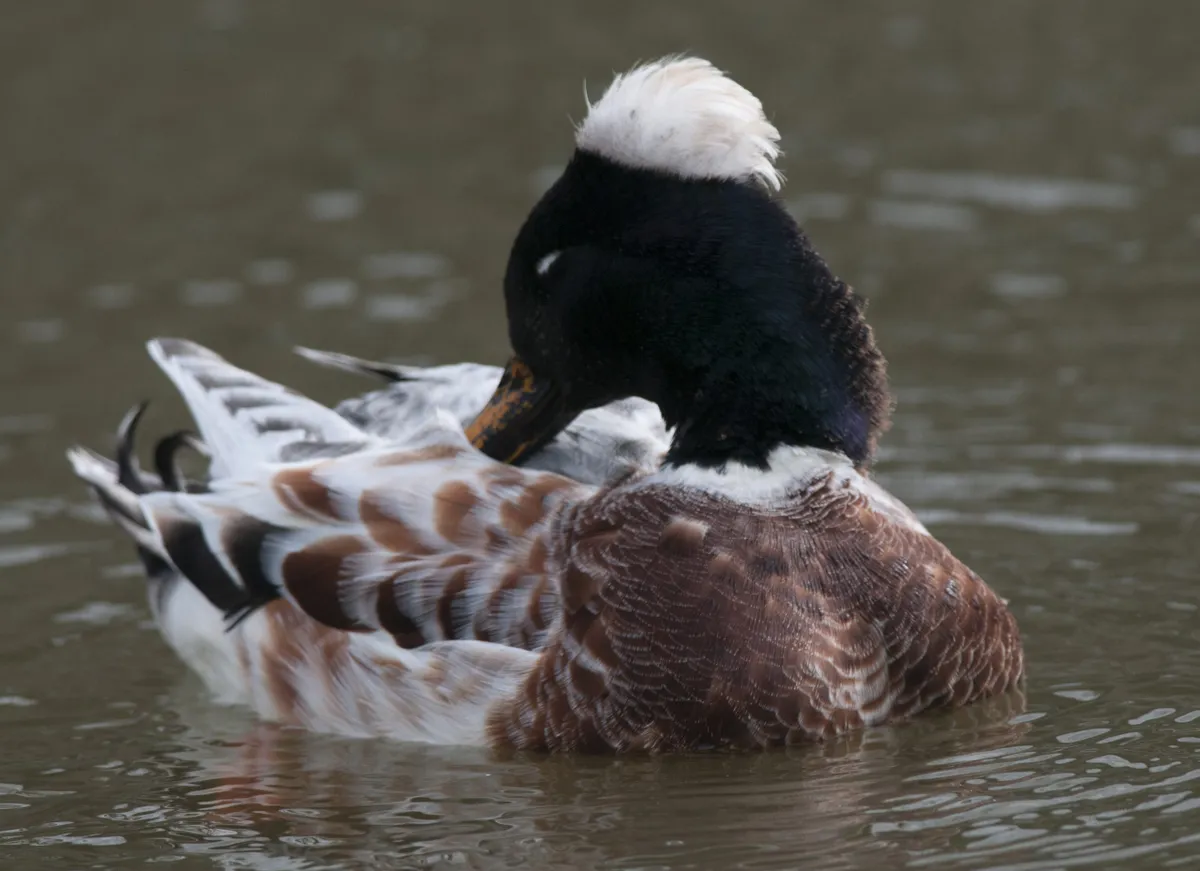
The Muscovy duck is another domestic species that is often encountered in the wild. Domestic-type ducks are most commonly met with at town park lakes but you could see them in wilder places too.
A third, less frequent group of oddballs are the hybrids. Ducks are not always that choosy about their partners and it is quite common for two different species to breed together. The resultant hybrids show a more or less random mixture of the traits of both parents.

If you find a duck that you don’t recognise and that’s not shown in your field guide, you could try posting a photograph of it online – several bird identification groups exist on Facebook, or tweet the photo.
And remember there is always a chance that your oddity is a genuine wild bird that has become lost on migration – for example, each year a few wild North American ducks such as green-winged teal and lesser scaup will turn up in the UK.
Which of our wintering ducks come from Russia?
Britain is a major wintering area for wildfowl, attracting birds from Greenland in the west to Siberia in the east.
Migrants make up a significant component of the ducks that we see here during the coldest months, and a considerable number of species come from Russia, including breeding populations of teal, wigeon, pochard, tufted duck and pintail.
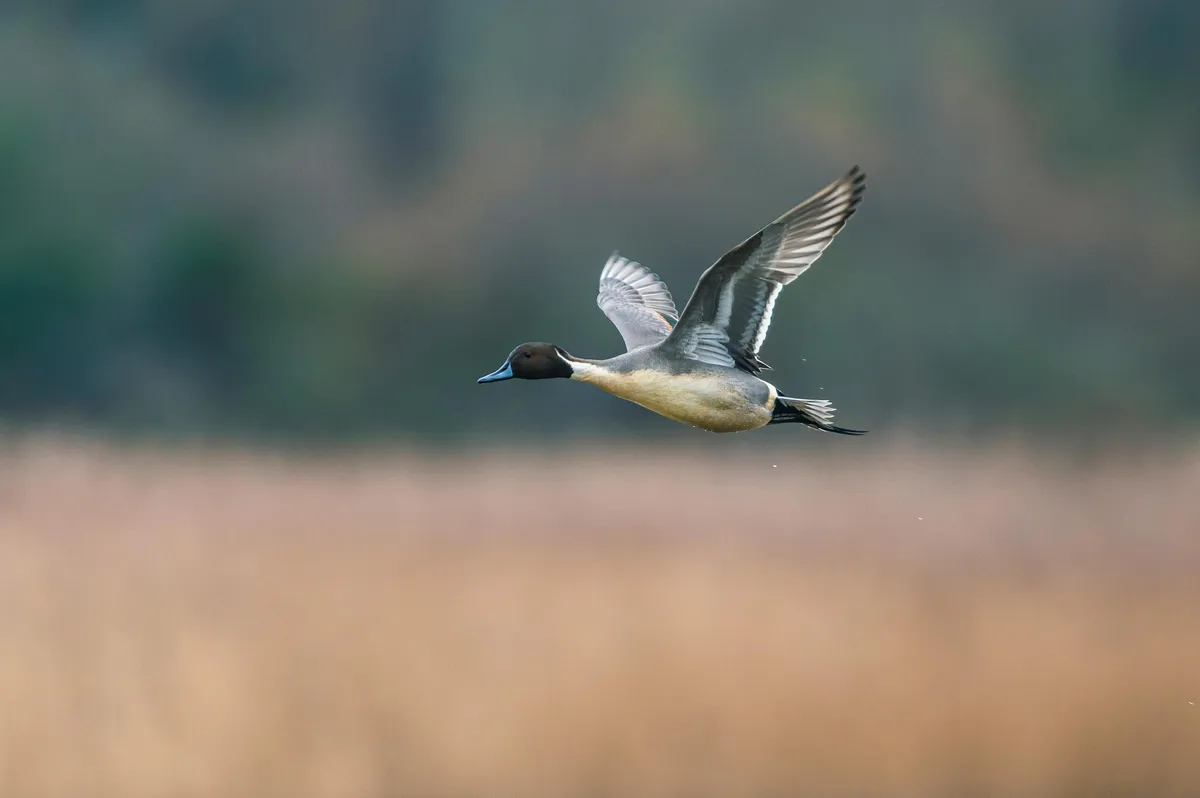
These species winter in Britain in large numbers, with more birds present in years when the weather conditions elsewhere in Europe are particularly poor. Mallards also fly in from Russia, though the majority come from Iceland and northern Europe.
Not all migrating Russian ducks come to Britain. The bulk of the Russian gadwall population, for instance, winters on the Black and Caspian Seas, so only a few records exist of these individuals visiting the UK.
This Q&A originally appeared in BBC Wildlife, and was answered by Mike Toms.
Why are male mallards so violent towards females?

Despite their apparently docile nature, mallards are fascinating to observe. Their prenuptials are often quite aggressive and can involve several males chasing and forcing themselves upon a female. These are usually males that have missed out on pairing up the conventional way and instead choose to hang out in bachelor gangs.
Ducks are one of the few birds with an external penis – most other bird species have a sensory opening known as the cloaca. So it can’t be much fun for the poor female.
However, recent research has shown that female ducks have the last word. These include internal adaptations that force the male down cul-de-sacs that prevent fertilisation. Effectively, she only allows the males that she likes to fertilise her.
This Q&A originally appeared in BBC Wildlife, and was answered by David Lindo.
12 species of ducks to look out for in the UK
Shelduck (Tadorna tadorna)
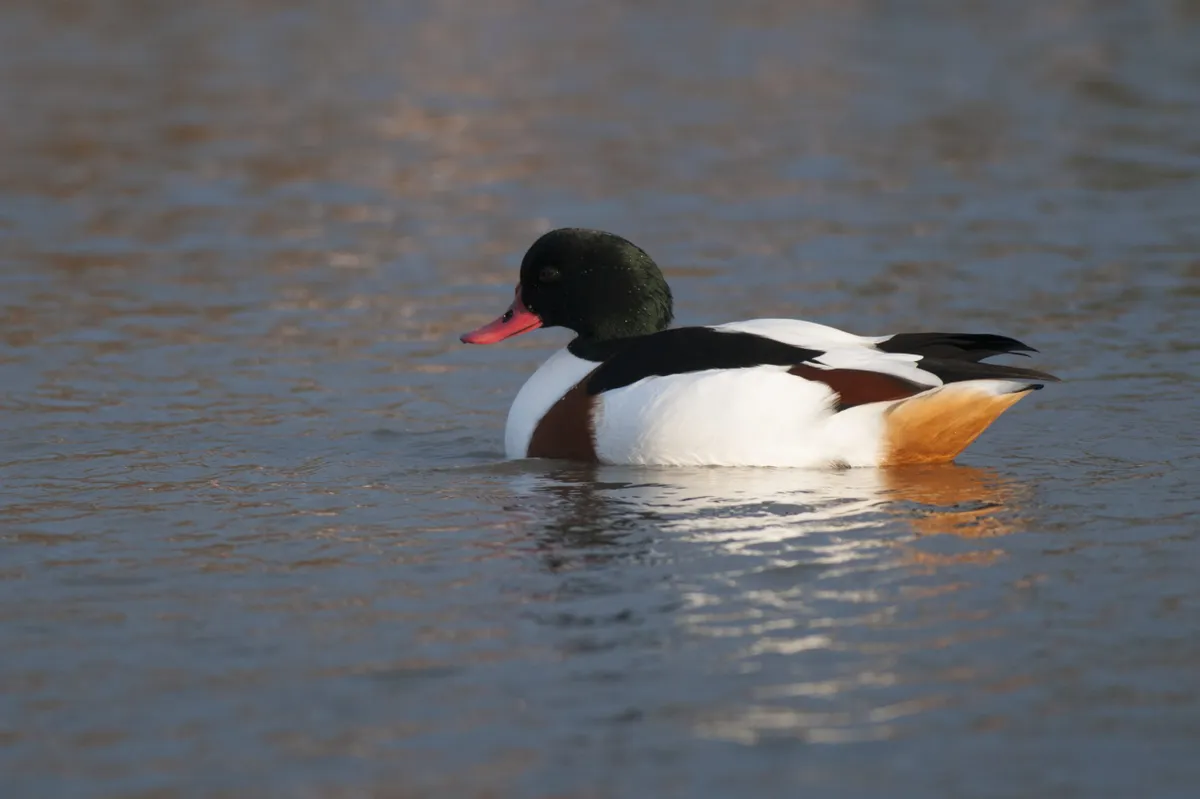
This large, handsome duck is very striking with its bold pattern. From a distance, it looks black and white, but a closer view reveals a beautiful green gloss to its head, and a dark chest band around its chest.
Shelducks are mainly coastal birds in the UK – look out for them on mudflats and saltmarsh, where they dabble in wet mud in search of their favourite food – a burrowing snail called Hydrobia ulvae.
The shelduck is an example of a tautonym, where the genus and species name are the same word.
Mandarin (Aix galericulata)

The males of many of our ducks are colourful and striking in their breeding plumage, but the dazzling mandarin puts all of these in the shade. This small duck is native to eastern Asia, but is a very popular addition to collections of exotic wildfowl. Enough mandarins have escaped from these over the years to establish a sizeable breeding population, mainly in southern England.
Look out for them on sheltered lakes and slow-flowing rivers with plenty of trees around – they nest in tree holes, with the ducklings beginning life with a terrifying leap down to ground level. In their native countries, these ducks represent marriage and faithfulness, and they are unusual in almost never cross-breeding with other duck species.

Wigeon (Mareca penelope)
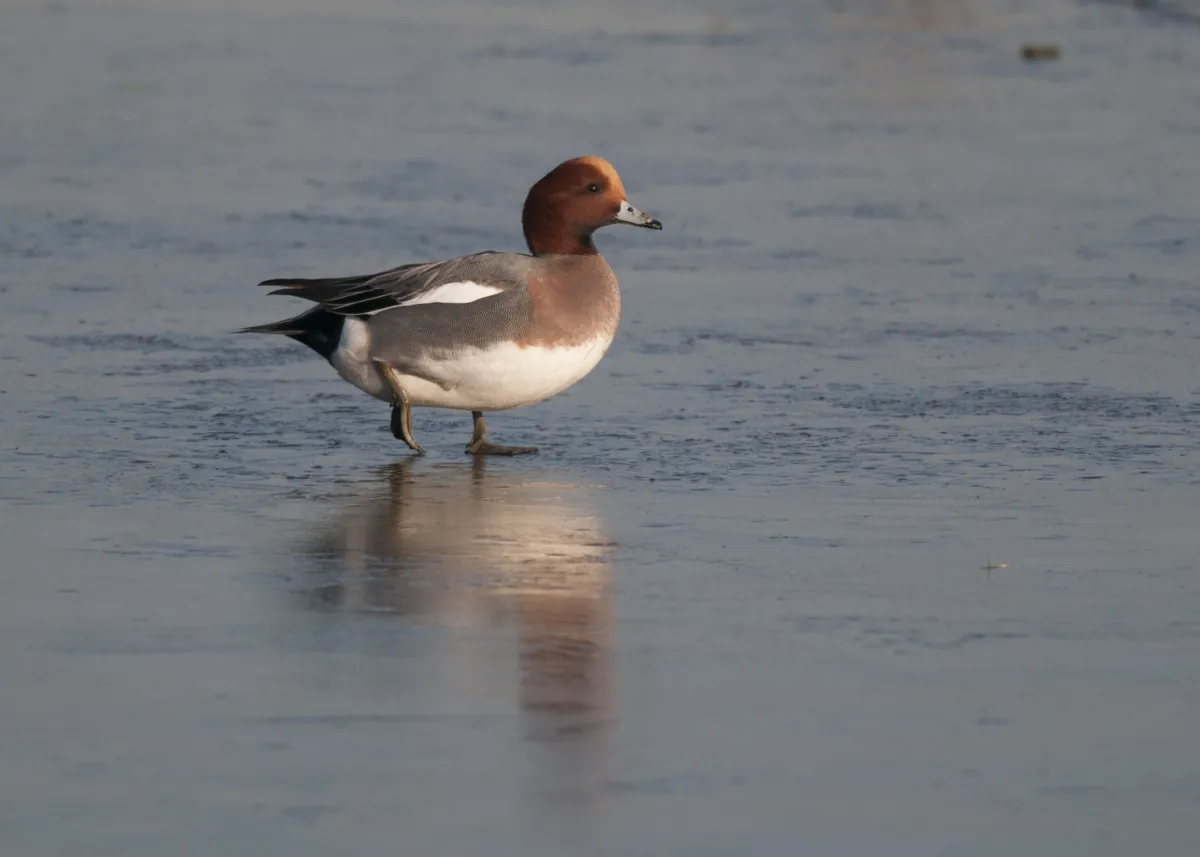
You’ll often hear wigeons before you see them – the male’s excitable, whistling ‘wee-oo’ call is very distinctive. In flight, they show white patches on the leading edge of the ‘arm’ of the wing, and white bellies. The male has mainly dove-grey and peachy-pink plumage, while the female is a rich chocolate-brown colour.
This compact, pretty dabbling duck gathers in very big flocks, and spends at least as much time on land as in the water. It often feeds alongside flocks of wild geese and swans on damp grassland.
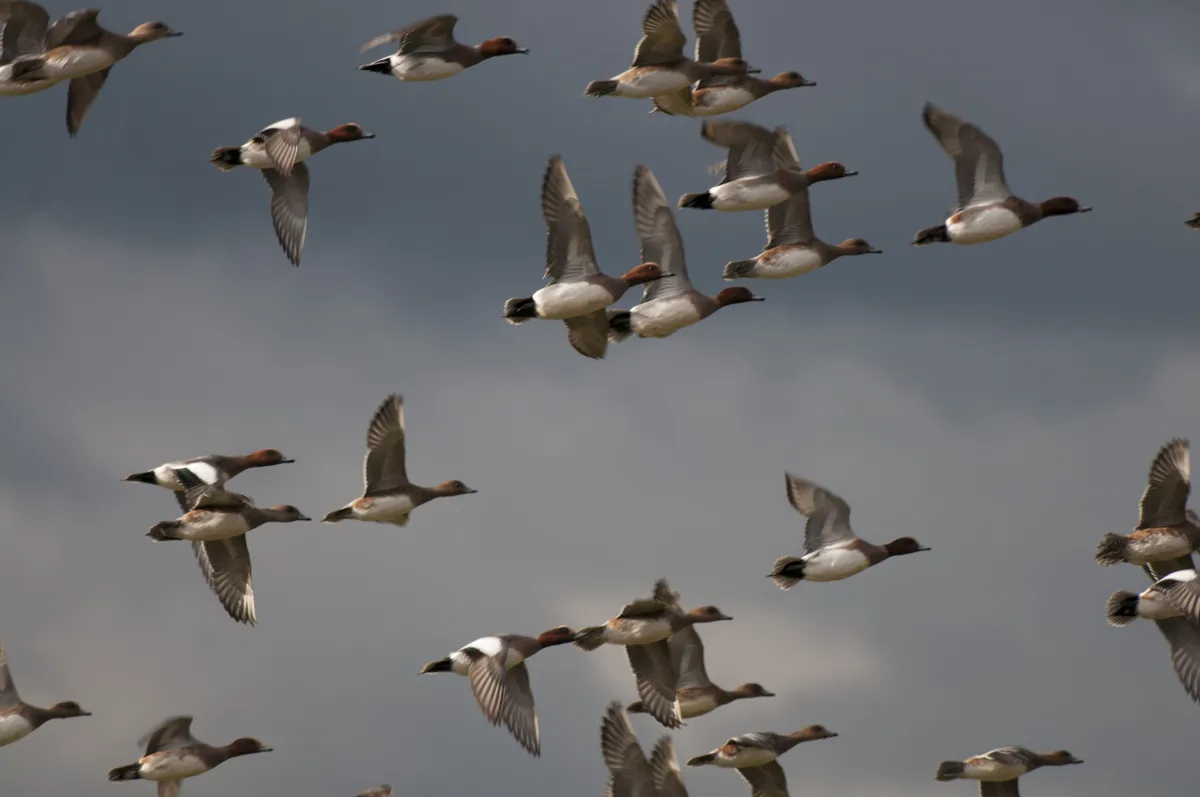
Shoveler (Spatula clypeata)

There is no mistaking a shoveler once you get a good look at its super-sized bill. That bill is the ultimate dabbling tool, and when you see a shoveler on the water it will probably be paddling purposefully along with its bill submerged – these ducks rarely feed in any other way.
The male’s colour combination of glossy green, blue, chestnut and white is also highly distinctive, as are his bright yellow eyes. Look out for large groups of males performing their spinning communal courtship displays to a female or two in late winter.
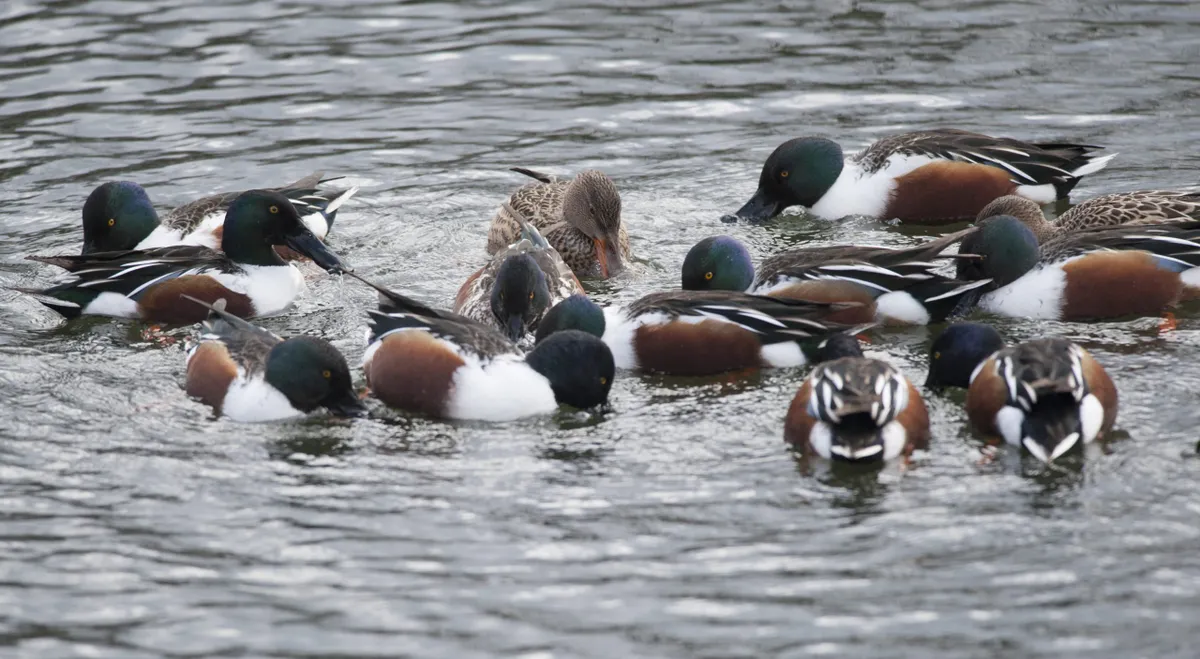
Garganey (Spatula querquedula)
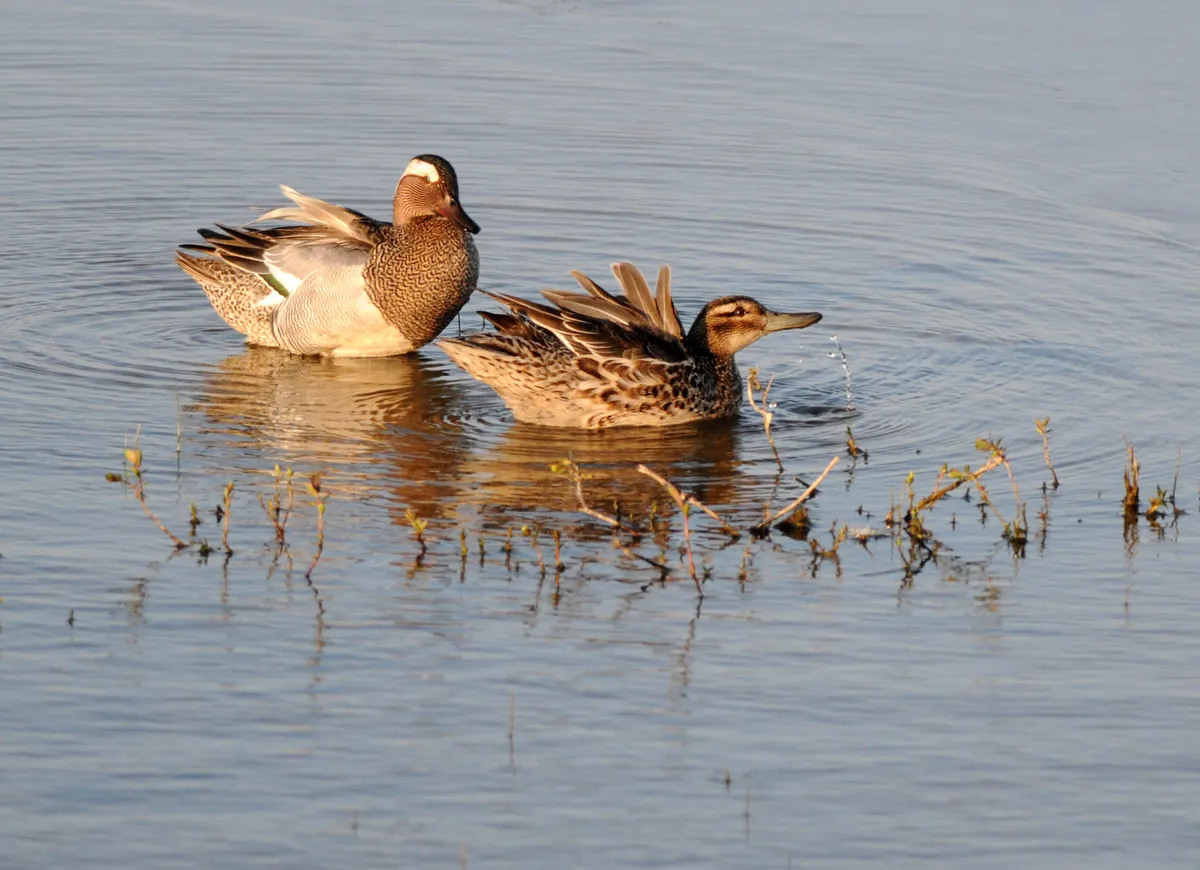
A small but slightly gangly and big-billed duck, the garganey is unique among all our wildfowl in that it is a summer visitor. It is also rather uncommon, and because we only see it in the breeding season we rarely see more than a couple at a time. Look out for pairs together at coastal marshes and lakes from March.
Once they settle down to nest, they become extremely shy, but you will have a second chance to see them in late summer, when they have finished breeding. At this time of year, the male has lost his striking breeding plumage, and adults and juveniles all look very similar. Check through flocks of teal, looking for a slightly larger duck with a more boldly marked face pattern. By late autumn, garganeys are on their African wintering grounds, where they gather in big flocks, just as other ducks do in the UK in winter.
Pintail (Anas acuta)
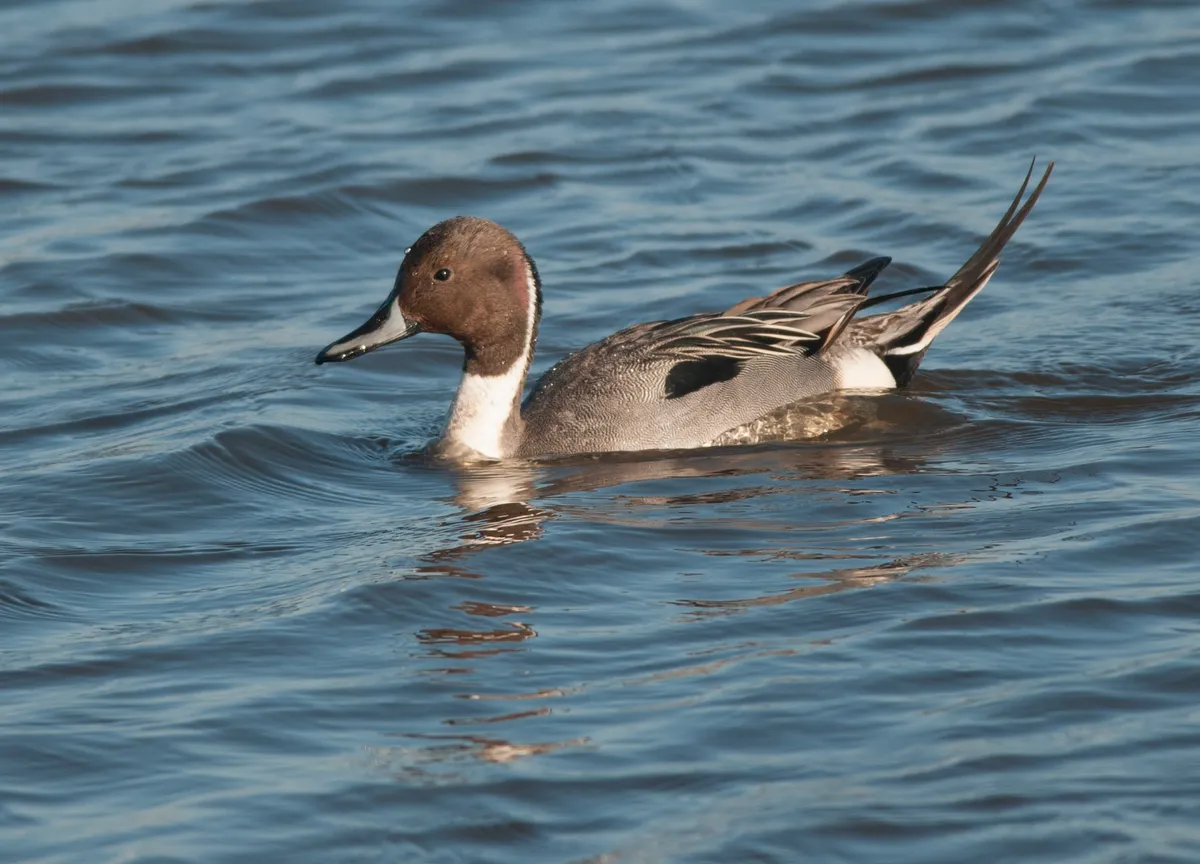
This duck cuts an elegant figure alongside its relatives, with a long neck and long tail which, in the male, ends in an elongated black ‘pin’, formed by the two central tail feathers, that gives it its name. The male is not colourful but is dapper in his brown, white and grey plumage.
Pintails frequently upend to feed and tend to feed in deeper water than most dabbling ducks. They are usually a little less numerous than other dabblers and stick together in small groups.

Pochard (Aythya ferina)
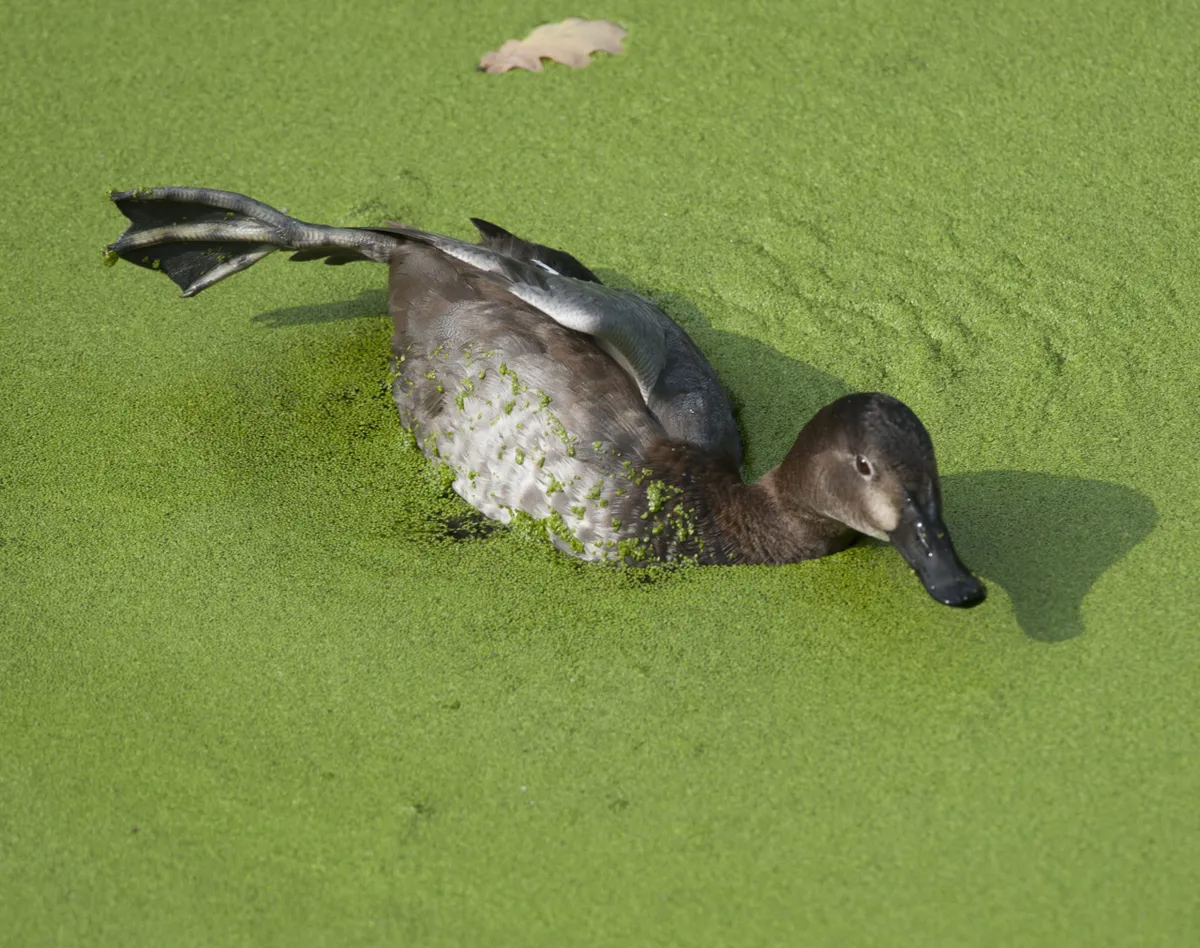
In 2015 the pochard was designated as vulnerable to extinction, after serious declines in Eurasia. The large numbers that overwinter in Britain are, therefore, of global importance. This is a freshwater diving duck, which sometimes turns up in town park lakes and is also a frequent visitor to reservoirs.
It has a distinctive head shape which helps distinguish it from the more common tufted duck, even from a long distance. Male pochards greatly outnumber females here in winter; the females tend to travel further south.

Goosander (Mergus merganser)
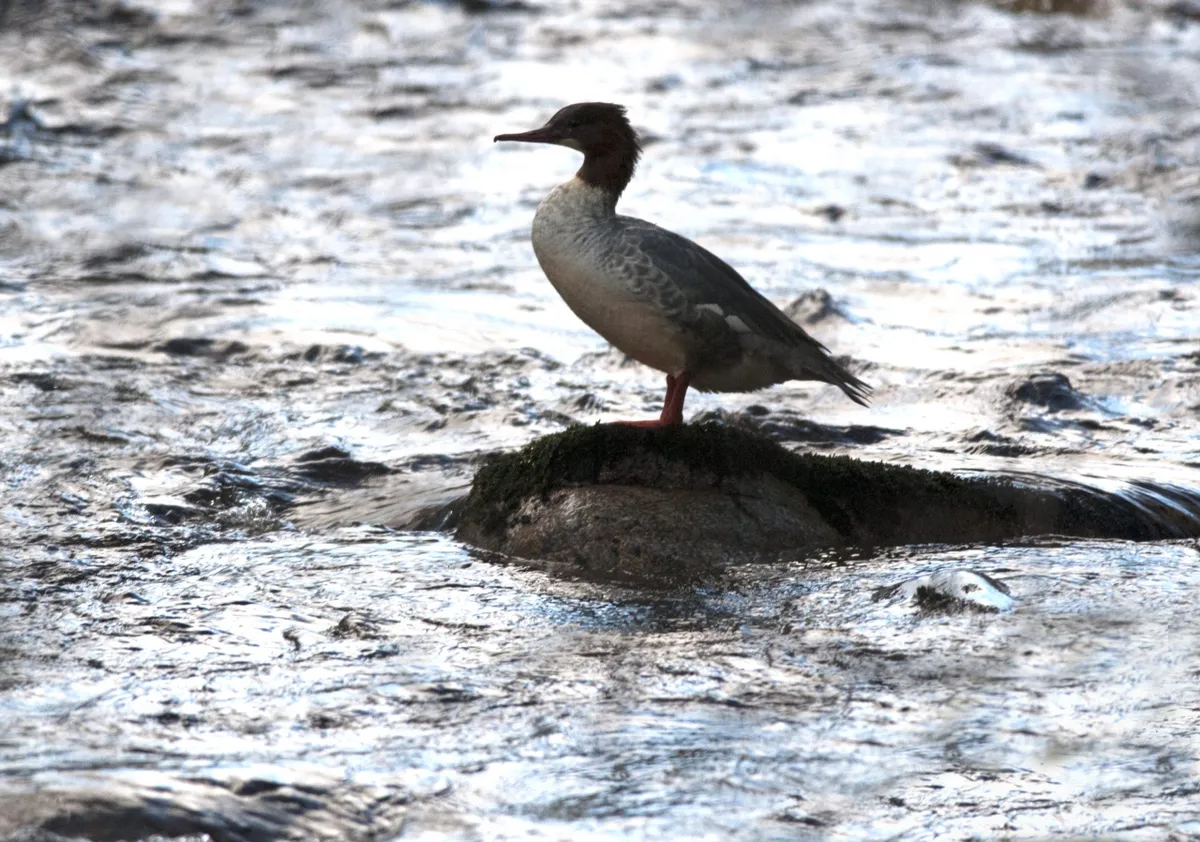
Ducks’ bills are lined with projections called lamellae, which trap food particles when the bird dabbles. In the sawbills (red-breasted merganser, goosander, smew and the rare vagrant, hooded merganser), these lamellae are modified into sharp points, like the teeth of a saw, which help these predatory ducks hang onto the slippery fish that they catch.
The goosander is the largest of our sawbills and the one you are most likely to see on inland waters in most of the UK – a sleek, long-bodied and handsome freshwater duck that forms small flocks on large, deep but well-vegetated lakes.
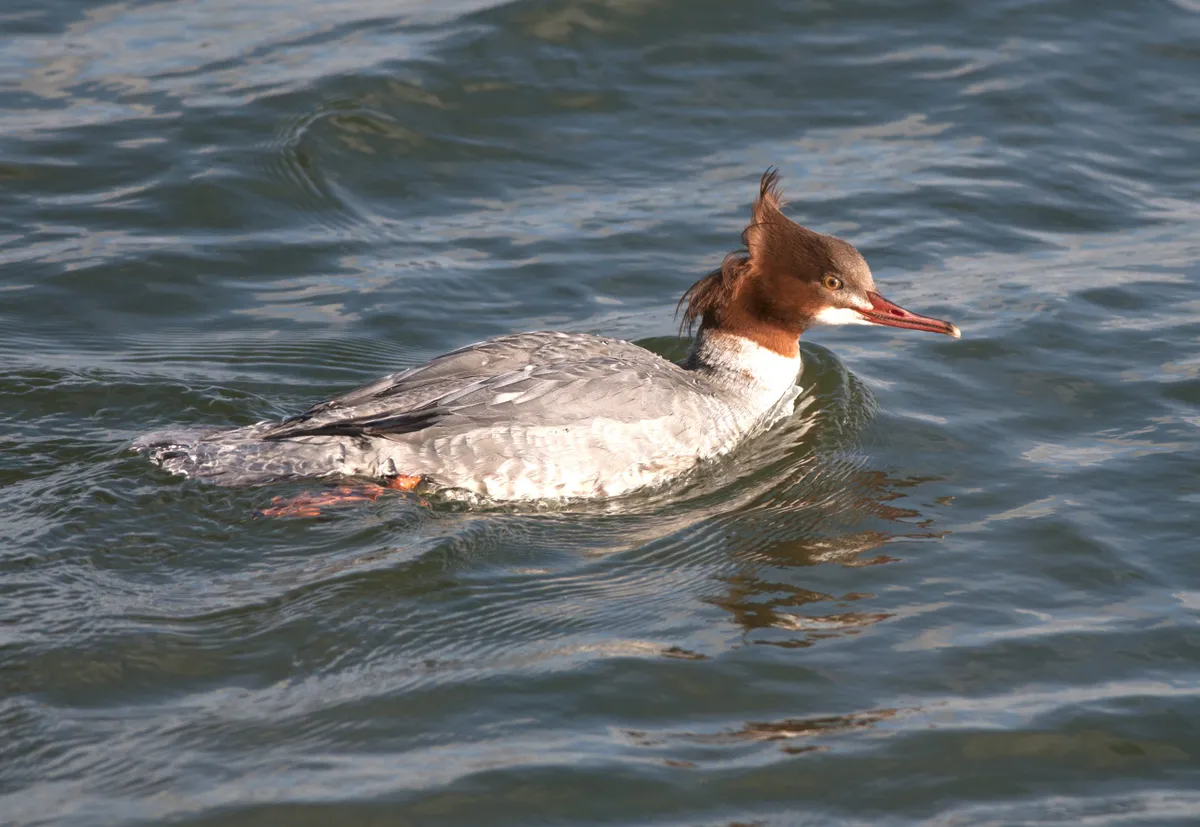
Smew (Mergellus albellus)

This little gem of a duck is a rare winter visitor to the UK, travelling to us from its breeding grounds in the boreal forests of northern Eurasia. Most of the smews we see are ‘redheads’ – adult females and juveniles. They have grey and white body plumage and a chestnut upper face.
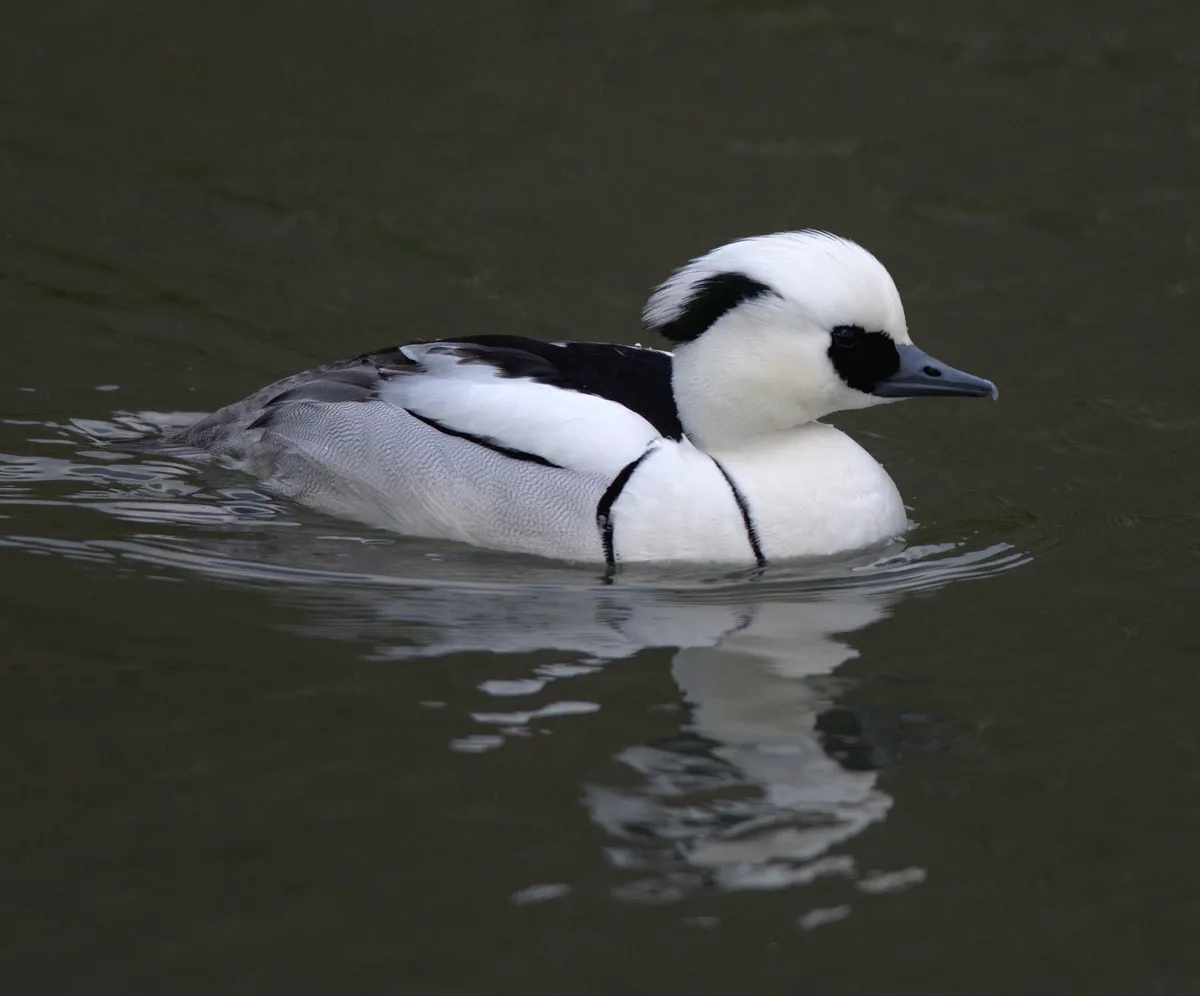
If you are lucky, though, you’ll see one of the stunning, mostly white adult drakes. Smews prefer deep lakes and often turn up at the same sites year after year. They are frequent divers, hunting underwater for small fish.
Long-tailed duck (Clangula hyemalis)
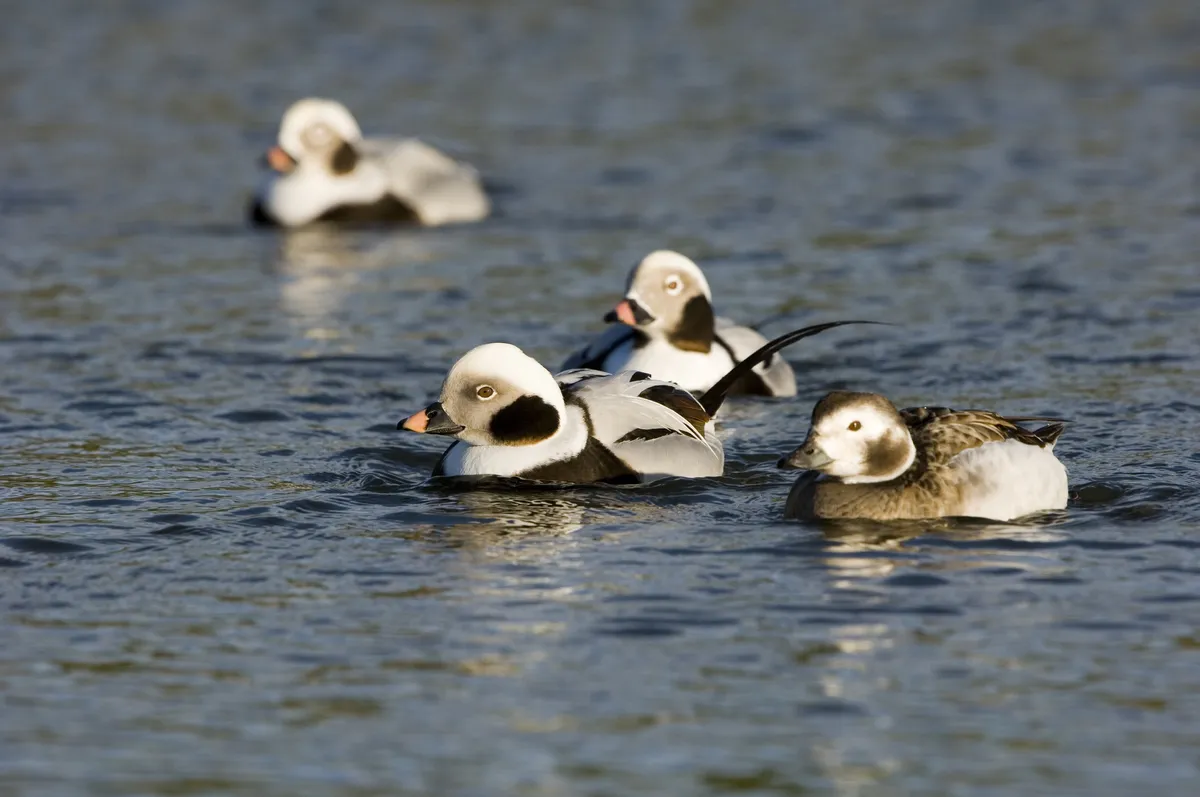
The beautiful long-tailed duck may be seen in good numbers in sheltered bays off the coast of northern parts of the UK, especially north-eastern Scotland. It does also turn up on inland waters, especially deep reservoirs, usually in ones and twos, and may stay for weeks at a time.
It is small and compact, and adult males in winter sport striking black-and-white plumage. It is an expert diver and can reach depths of 60 metres – when actively feeding, it spends up to 80% of its time underwater rather than on the surface.
Common scoter (Melanitta nigra)
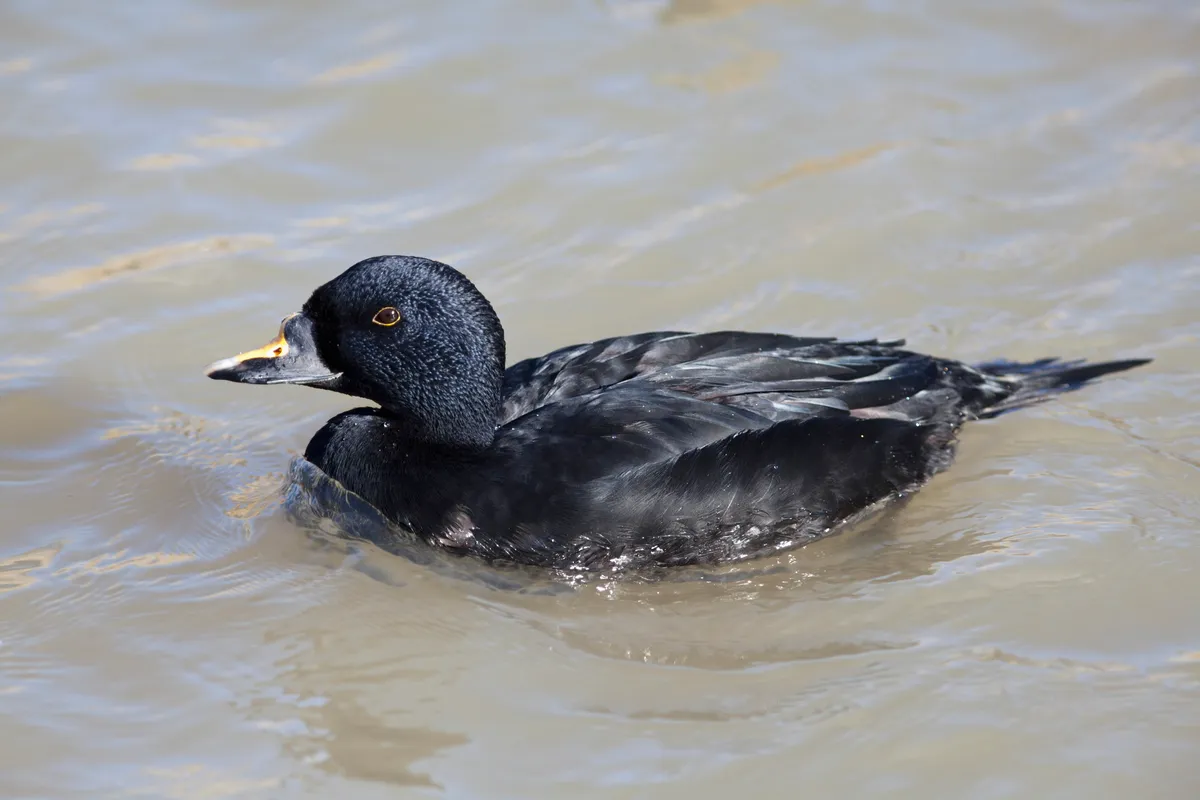
The remote moorlands of northern Scotland hold a few breeding pairs of common scoters, but we know this duck best as a winter visitor to our seas. Common scoters will gather in large ‘rafts’ at favourite feeding spots, which can be some way out at sea – you may need a telescope to get a good look at them.
The males are completely black, while the females are brown with paler cheeks that stand out over some distance. As you watch the raft, you’ll notice how when one dives, the rest follow, like an underwater Mexican wave.
Goldeneye (Bucephala clangula)
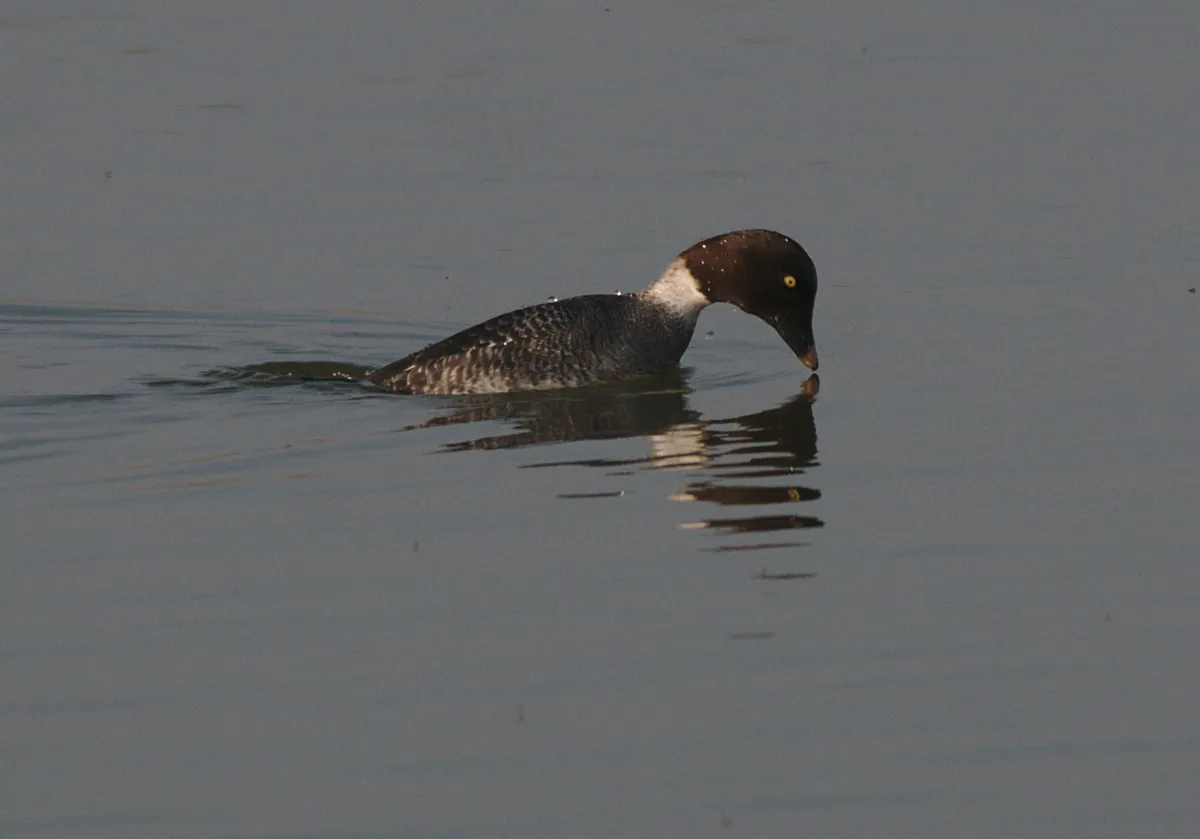
Its name may make you think of James Bond, but this little diving duck is anything but cool, calm and collected. It is at its most hyperactive in late winter, when the black-and-white males try to impress the grey, chestnut-headed females with a comical courtship dance that involves throwing the head back at whiplash speed and pointing the bill skywards, then surging forwards with a quick leg-kick. Goldeneyes visit deep lakes and reservoirs all through the winter, though rarely in large groups.
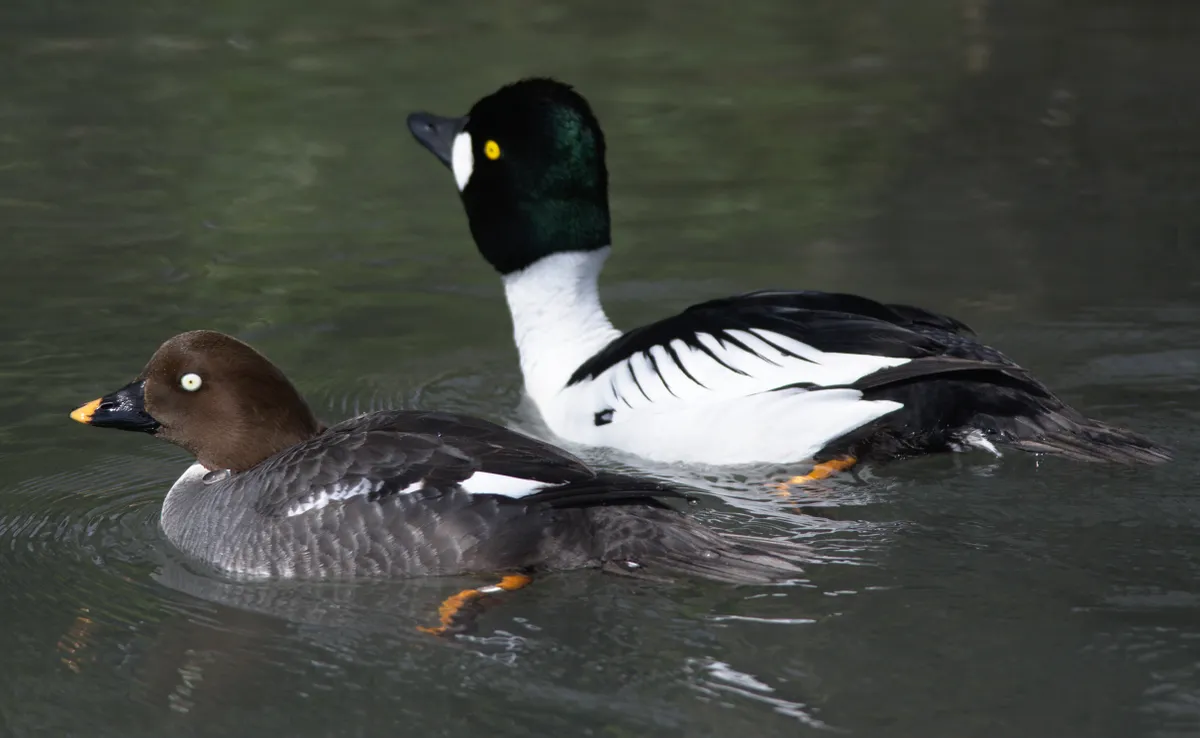
Marianne Taylor is the author of RSPB Spotlight Ducks and Geese, published by Bloomsbury, £12.99.
